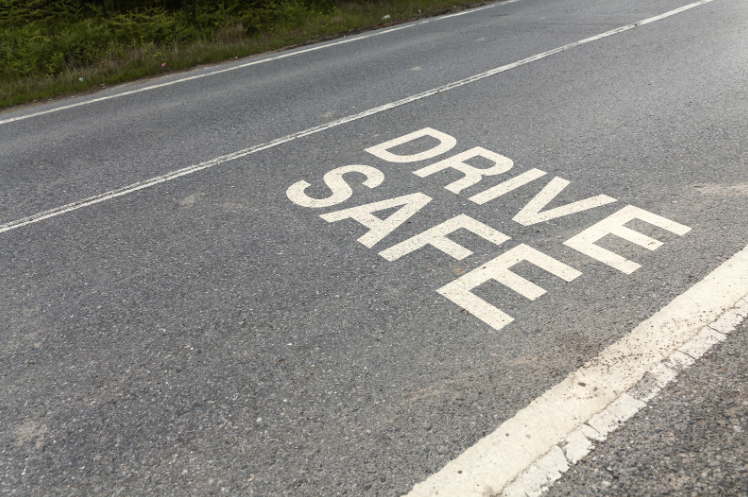Operating while visibly impaired (OWVI) pertains to operating a vehicle under the influence of alcohol or drugs with noticeable signs, regardless of one’s blood alcohol level. Such an offense may lead to monetary fines, suspension of license and even confinement in jail; thus stressing the necessity for comprehending OWVI regulations as well as their associated consequences.
What Does “Operating While Visibly Impaired” Mean?
The term “Operating while visibly impaired” (OWVI) is a legally recognized offense which refers to driving a vehicle when one’s capacity to do so is evidently compromised by alcohol, drugs or both. Unlike other Driving Under Influence (DUI) charges, OWVI does not necessarily depend on the Blood Alcohol Concentration level as evidence of impairment. Rather, it considers any observable proof that indicates decreased ability in operating the vehicle safely.
Table: Key Points of OWVI
| Aspect | Description |
| Definition | OWVI stands for Operating While Visibly Impaired, which entails instances wherein a driver’s impairment is noticeable through observable indications such as erratic driving behavior, slurred speech or deteriorated motor functions. |
| Legal Basis | The foundation of the offense is based on the idea that operating a vehicle while impaired, regardless of whether it’s due to alcohol, drugs or a mixture thereof, presents an immense danger to society. |
| Evidence Requirement | To prosecute OWVI, it is necessary to provide proof that the driver’s capacity to drive was visibly impaired. Such evidence is usually obtained through observations made by law enforcement or other witnesses who take note of the individual’s compromised behavior behind the wheel. |
| Absence of BAC Requirement | In contrast to DUI violations that necessitate a designated Blood Alcohol Concentration (BAC) limit for proving legal impairment, OWVI accusations can be filed simply on the basis of apparent lack of sobriety and are indifferent to BAC levels. Thus, even if an individual’s BAC is below the lawful cutoff point, they may still face charges for OWVI provided their behavior and conduct demonstrate evident hindrance. |
Legal Standards and Consequences
In many jurisdictions, OWVI (Operating While Visibly Impaired) refers to a situation where a person’s ability to drive is visibly affected by intoxicants, even if their Blood Alcohol Concentration (BAC) is below the standard limit for a DUI charge (typically 0.08% in most states). The term “visibly impaired” implies that evidence can be gathered from the driver’s physical appearance, behavior, or driving patterns.
Penalties for OWVI
Offenders may face fines, jail time, license suspension, and mandatory participation in alcohol or drug education programs, depending on the jurisdiction and severity of the offense.
| Penalties | Details |
| Fines | Fines can range from $200 to $1,000, depending on the jurisdiction. |
| Jail Time | Offenders may face jail time ranging from a few days to several months. |
| Driver’s License Suspension | Typically, a suspension period of 30 days to a year may be imposed. |
| Mandatory Programs | Participation in alcohol or drug education programs may be required. |
Long-Term Impact of OWVI Convictions
An OWVI conviction can have lasting repercussions:
- Insurance Rates: Convicted individuals may experience increased premiums or even policy cancellation.
- Employment: Professionally, OWVI convictions can lead to job loss, especially in positions that involve driving responsibilities. It can also hinder future employment prospects, particularly in roles that require a clean driving record.
Detecting and Proving OWVI

Law enforcement officers use various methods to detect and prove OWVI, relying on observations and field sobriety tests (FSTs) to gather evidence.
Law Enforcement Observations
Law enforcement officers utilize careful observations to detect potential cases of OWVI (Operating While Visibly Impaired). They rely on specific physical, behavioral, and driving indicators to assess impairment:
- Physical Appearance: Officers look for visible signs such as bloodshot eyes, flushed face, and difficulty with motor skills like coordination and balance.
- Behavioral Cues: They observe how drivers respond to instructions and interact during interactions, noting any signs of confusion, irritability, or inappropriate behavior.
- Driving Patterns: Officers monitor driving behaviors such as weaving within lanes, sudden braking, accelerating or decelerating erratically, and failing to signal turns or lane changes.
Field Sobriety Tests (FSTs)
Field Sobriety Tests (FSTs) are standardized procedures used by law enforcement to further evaluate a driver’s level of impairment:
- Horizontal Gaze Nystagmus (HGN) Test: This test examines the eyes’ involuntary jerking movements as the driver follows a stimulus (e.g., a pen or flashlight) horizontally. Nystagmus, an exaggerated jerking, can be more pronounced under the influence of alcohol or drugs.
- Walk and Turn Test: During this test, the driver is instructed to walk heel-to-toe along a straight line, turn as directed, and return in the same manner. Officers assess balance, coordination, and the ability to follow instructions accurately.
- One-Leg Stand Test: In this test, the driver stands on one leg while counting aloud for a specified duration. Officers observe for swaying, using arms for balance, hopping, or putting the foot down, which can indicate impaired motor function and balance control.
Defending Against OWVI Charges
When facing OWVI charges, defendants can employ various defense strategies to challenge the allegations and mitigate potential penalties.
Common Defense Strategies
When facing OWVI (Operating While Visibly Impaired) charges, defendants can employ several strategic defense approaches to challenge the allegations:
- Challenging the Legality of the Traffic Stop: Defendants may assert that the initial traffic stop was unjustified, arguing that law enforcement lacked reasonable suspicion or probable cause to pull them over.
- Disputing Field Sobriety Test Results: Defendants can challenge the accuracy of field sobriety tests (FSTs) administered by highlighting factors that may have affected test results. This includes medical conditions impacting balance, improper test administration, or environmental factors that could have influenced performance.
- Arguing Against Subjective Judgment of Impairment: Another defense tactic involves disputing the subjective interpretation of impairment by law enforcement officers. Defendants may present evidence that observed behaviors, such as slurred speech or unsteady movement, could be attributed to factors other than intoxication, such as fatigue, stress, or underlying medical conditions.
Importance of Legal Representation
Securing competent legal representation is paramount for individuals facing OWVI charges. A skilled attorney specializing in DUI defense can provide crucial assistance and advantages:
- Navigating Legal Complexities: Attorneys possess in-depth knowledge of OWVI laws and legal procedures, ensuring defendants’ rights are protected throughout the legal process.
- Developing Tailored Defense Strategies: Experienced lawyers analyze case specifics to identify weaknesses in the prosecution’s case and develop effective defense strategies accordingly.
- Minimizing Potential Penalties: Legal counsel negotiates with prosecutors to potentially mitigate charges and penalties associated with OWVI convictions. This includes negotiating reduced fines, minimizing license suspension periods, or advocating for alternative sentencing options such as rehabilitation programs.
Preventive Measures and Safe Driving Practices

Implementing preventive measures and safe driving practices can significantly reduce the risk of OWVI (Operating While Visibly Impaired) incidents and promote road safety.
Plan Ahead
Planning ahead ensures responsible decision-making before getting behind the wheel:
- Designated Driver: Always designate a sober driver before consuming alcohol. Designated drivers should abstain from drinking any alcohol to ensure they can drive safely.
- Public Transportation or Ride-Sharing: If a designated driver is unavailable, opt for public transportation or a reliable ride-sharing service like Uber or Lyft to safely reach your destination without driving impaired.
Understand Your Limits
Awareness of personal alcohol limits is essential for making informed choices:
- Know Your Tolerance: Understand how alcohol affects your body based on factors such as weight, metabolism, and food consumption. Monitor your alcohol intake to prevent impairment and avoid risking your safety and that of others on the road.
- Avoid Risky Behavior: If uncertain about your ability to drive safely after drinking, refrain from driving altogether. It’s better to find alternative transportation than to risk the consequences of impaired driving.
Utilize Technology
Modern technology offers tools to assist in making responsible decisions:
- BAC Estimator Apps: Use smartphone apps designed to estimate Blood Alcohol Concentration (BAC) based on personal factors like gender, weight, and the amount of alcohol consumed. These apps provide approximate BAC levels to help gauge whether it’s safe to operate a vehicle.
- Ride-Booking Apps: Utilize ride-booking apps that provide convenient and reliable transportation options, facilitating safe travel arrangements when a sober driver isn’t available.
Conclusion
Operating while visibly impaired can have serious legal and personal consequences. It’s important to understand the legal thresholds and available defenses. Being informed and prepared is your best strategy for dealing with OWVI charges and ensuring your rights are protected. Remember, the safest approach is prevention—never drive if you are impaired.
FAQ
OWVI focuses on visible impairment, while DUI is determined by specific BAC levels regardless of visible impairment.
Yes, operating under the influence of prescription drugs that impair your ability to drive can result in OWVI charges.
Remain calm, comply with lawful orders, and avoid making any statements that could be incriminating. It’s advisable to contact a lawyer as soon as possible.
An OWVI conviction will likely lead to points on your driving record, increased insurance costs, and possible license suspension.
Some jurisdictions offer diversion programs or probation, allowing for lesser penalties if certain conditions, such as attending an alcohol treatment program, are met.



